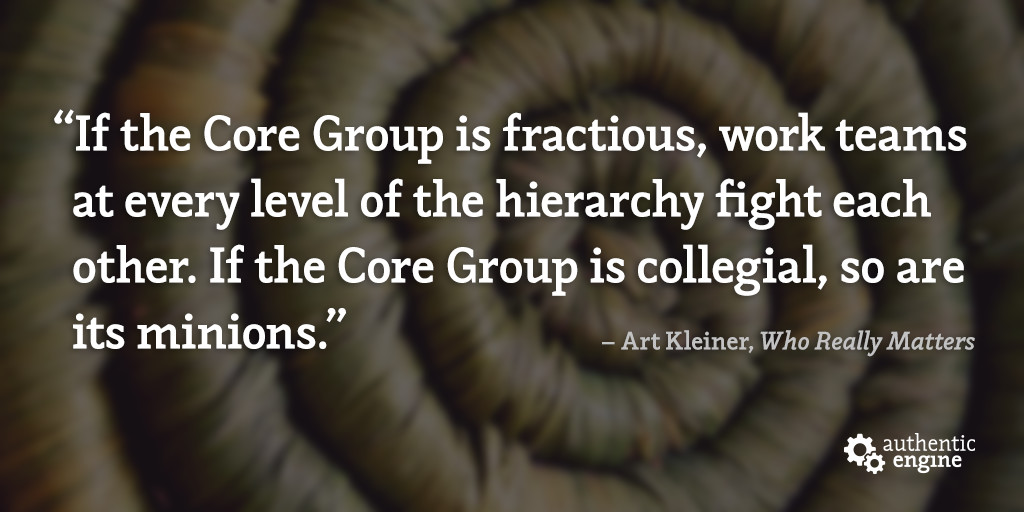 Who Really Matters (Amazon, Goodreads, Powells) puts forth the theory that central to every organization is a Core Group of people who really matter.
Who Really Matters (Amazon, Goodreads, Powells) puts forth the theory that central to every organization is a Core Group of people who really matter.
This post is part of a series summarizing the book and covers Part 1, Chapter 3. You may want to start with the introduction.
Chapter 3: Field Guide to Some Common Core Groups
This chapter describes common patterns in Core Group membership. The main take away is that there are no fixed parameters for Core Group membership and every organization has an evolving Core Group story unique to it.
Categorizing by membership attributes:
- At larger organizations there might be many interlocking Core Groups.
- Core Group membership might shift or might be fixed for years, decades or even generations.
- Sometimes the senior executive is part of the Core Group and sometimes not.
- The Core Group may include those with direct control over hiring and firing and other times they operate exclusively via culture channels.
- Sometimes the Core Group includes founders and first employees and other times the Core Group includes relative newcomers who have implemented sweeping changes.
- Core Groups can be tiny or huge.
Categorizing by behavior, Kleiner offers these Core Group examples:
- The deceptively subservient bureaucracy whereby there is a long-standing Core Group with managers that come and go. the goal of the operation is to protect the status and position of whomever comprises the bureaucracy.
- The too nice for a Core Group where no one admits to being part of the Core Group and asserts “everyone is equal.” In reality, a Core Group is explicitly established (e.g. as with a board of directors) or one or two people manipulate their way into the Core and dominate.
- The indigestible acquisition when one organization acquires another and its Core Group remains in place, refusing to be assimilated.
- The hidden cabal where members of the Core Group influence the organization covertly.
- The charismatic random star where there are one or two rainmaking-type individuals who are constantly indulged regardless of their behavior.
- The silos, stovepipes, chimneys scenarios whereby different parts of an organization ignore or compete with one another and eventually form their own competing Core Groups.
Kleiner also notes here that Core Group dynamics tend to replicate themselves throughout and down the entire organization:
If the Core Group is fractious, work teams at every level of the hierarchy fight each other. If the Core Group is collegial, so are its minions. (p. 30)
What’s Next?
Stay tuned for our next post in this series, a summary of Part 1, Chapter 4: A Very Special Kind of Love, which describes what it’s like to be part of a Core Group.
Citations
Kleiner, Art. Who Really Matters: The Core Group Theory of Power, Privilege, and Success. 1st ed. New York: Currency/Doubleday, 2003.
This post is part of our Book Summary series in which we share summaries of books about leadership, governance, and community building. To discuss the book, leave a comment below or join our Goodreads group.


0 Comments